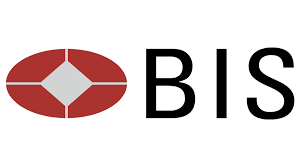The recently released June statement of account of the Bank for International Settlements --
https://www.bis.org/banking/balsheet/statofacc210630.pdf
-- contains information that suggests a decrease of about 46 tonnes in the bank’s gold swaps to 471 tonnes. This compares to the record high estimated at 552 tonnes as of February 25 this year.

The BIS seemingly remains an active trader of significant amounts of gold swaps on a regular basis. So far there seems to be no definitive sign that the BIS is reducing its exposure to gold swaps.
A review of Table B below highlights recent activity, and despite the recent declines in gold swaps, the latest positions estimated from the BIS statements remain large.
To put this into context, this volume of gold swaps is close to the 504.8 tonnes of gold held by the European Central Bank. Only 10 countries report higher holdings of gold than the ECB.
No explanation for this continuing high level of swaps has been published by the BIS. Indeed, no comment on the bank's use of gold swaps has been offered since 2010. (See below.)
This gold is supplied by bullion banks via the swaps to the BIS. The gold is then deposited in BIS gold sight accounts (unallocated gold accounts) at major central banks such as the Federal Reserve.
The BIS’ use of gold swaps and derivatives has been extensive over the last 12 months, with the average level reported during that period still being the highest since August 2018 as highlighted in Table B below.
By contrast, in May 2019 the bank was exposed to only 78 tonnes in swaps.
As can be seen in Table A below, the BIS has used gold swaps extensively since its financial year 2009-10. No use of swaps is reported in the annual reports for at least 10 years prior to the year ended March 2010.
The February 2021 estimate of the bank’s gold swaps (552 tonnes) is higher than any level of swaps reported by the BIS at its March year-end since March 2010. The swaps reported at March 2021 is the highest year-end level reported as is clear from Table A.
-----
Table A -- Swaps reported in BIS annual reports
March 2010: 346 tonnes.
March 2011: 409 tonnes.
March 2012: 355 tonnes.
March 2013: 404 tonnes.
March 2014: 236 tonnes.
March 2015: 47 tonnes.
March 2016: 0 tonnes.
March 2017: 438 tonnes.
March 2018: 361 tonnes.
March 2019: 175 tonnes
March 2020: 326 tonnes
March 2021: 490 tonnes
-----
The BIS rarely comments publicly on its gold banking activities, but its first use of gold swaps was considered important enough to cause the bank to give some background information to the Financial Times for an article published on July 29, 2010, coinciding with publication of the bank’s 2009-10 annual report.
The general manager of the BIS at the time, Jaime Caruana, said the gold swaps were "regular commercial activities" for the bank, and he confirmed that they were all carried out with commercial banks and so did not involve other central banks. Hence it is likely that the current level of gold swaps is the highest use of them by the BIS for at least 20 years. It also seems highly likely that the swaps are still all made with commercial banks because the BIS annual report has never disclosed a gold swap between the BIS and a major central bank.
The swap transactions potentially create a mismatch at the BIS, which conceivably ends up being long unallocated gold (the gold held in BIS sight accounts at major central banks) and short allocated gold (the gold required to be returned to swap counterparties). This possible mismatch has not been reported by the BIS.
The table below reports the estimated swap levels since August 2018. It can be seen that the BIS is actively involved in trading gold swaps and other gold derivatives with changes from month to month reported in excess of 100 tonnes in this period.
-----
Table B - Swaps estimated by GATA from BIS monthly statements of account
Month ..... Swaps
& year … in tonnes
Jun -21……/471
May-21……/517
Apr-21……/472
Mar-21……/490±
Feb-21…../552
Jan-21…../523
Dec-20 …/545
Nov-20…../520
Oct-20 …/519
Sep-20...../ 520
Aug-20...../ 484
Jul-20 ..... / 474
Jun-20 .... / 391
May-20 .... / 412
Apr-20 .... / 328
Mar-20 .... / 326*
Feb-20 .... / 326
Jan-20 .... / 320
Dec-19 .... / 313
Nov-19 .... / 250
Oct-19 .... / 186
Sep-19 .... / 128
Aug-19 .... / 162
Jul-19 ..... / 95
Jun-19 .... / 126
May-19 .... / 78
Apr-19 ..... / 88
Mar-19 .... / 175
Feb-19 .... / 303
Jan-19 .... / 247
Dec-18 .... / 275
Nov-18 .... / 308
Oct-18 .... / 372
Sep-18 .... / 238
Aug-18 .... / 370
± The estimate originally reported by GATA was 487 tonnes, but the BIS annual report states 490 tonnes, It is believed that slightly different gold prices account for the difference.
* The estimate originally reported by GATA was 332 tonnes, but the BIS annual report states 326 tonnes. It is believed that slightly different gold prices account for the difference.
GATA uses gold prices quoted by USAGold.com to estimate the level of gold swaps held by the BIS at month-ends.
-----
As noted already, the BIS in recent times has refused to explain the reasons for its activities in the gold market, nor for whom the bank is acting:
http://www.gata.org/node/17793
Despite this reticence the BIS is almost certainly acting on behalf of central banks in taking out these swaps, as they are the BIS' owners and control its Board of Directors.
This refusal to explain prompts some observers to believe that the BIS acts as an agent for central banks intervening surreptitiously in the gold and currency markets, providing those central banks with access to gold as well as protection from exposure of these interventions.
One possibility is that the swaps provide a mechanism for bullion banks to return gold originally lent to them by central banks to cover possible shortfalls of gold. Some commentators on the gold market have suggested that a portion of the gold held by exchange-traded funds and managed by bullion banks is sourced directly from central banks.
-----
Robert Lambourne is a retired business executive in the United Kingdom who consults with GATA about the involvement of the Bank for International Settlements in the gold market.
* * *
Join GATA here:
New Orleans Investment Conference
Hilton New Orleans Riverside Hotel
2 Poydras St., New Orleans, Louisiana
Tuesday-Friday, October 19-22, 2021
https://neworleansconference.com
* * *

